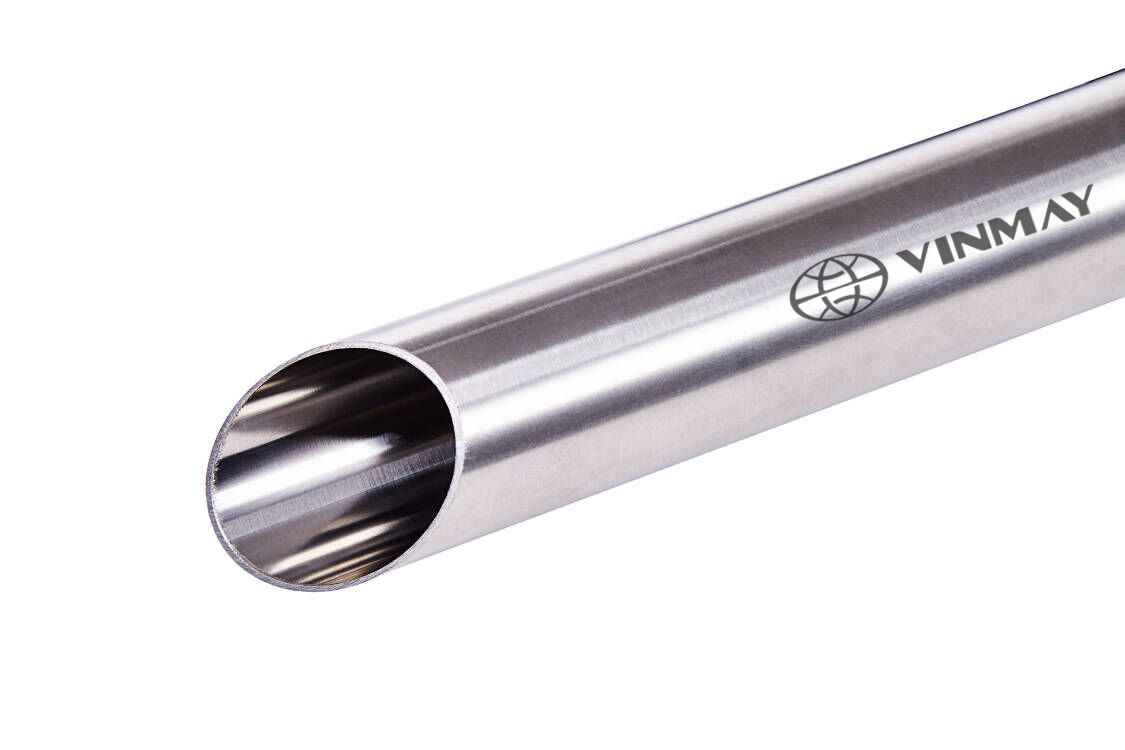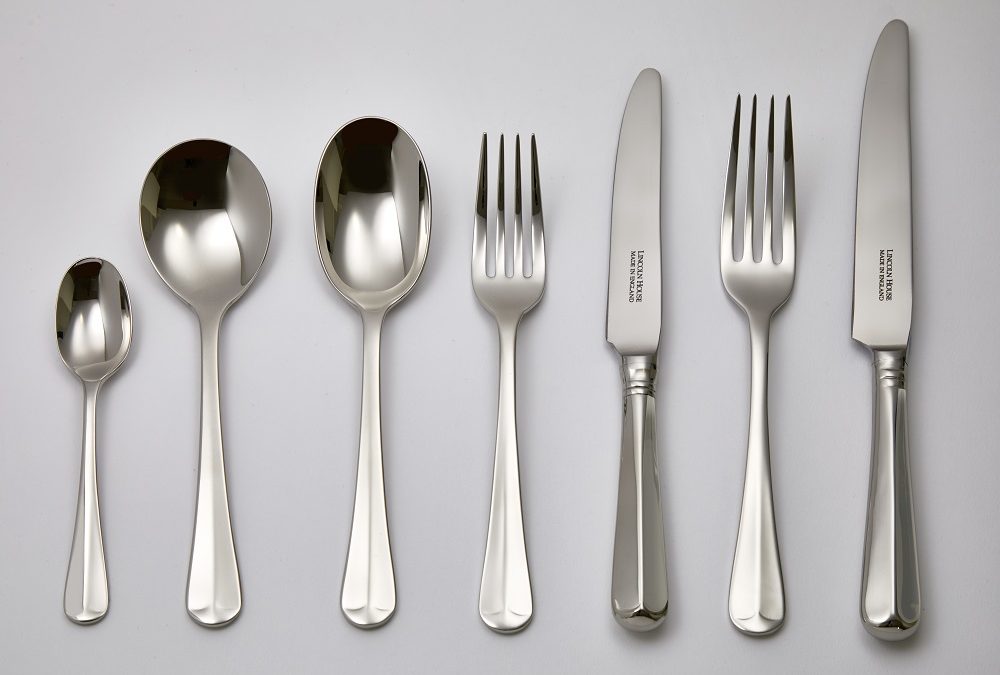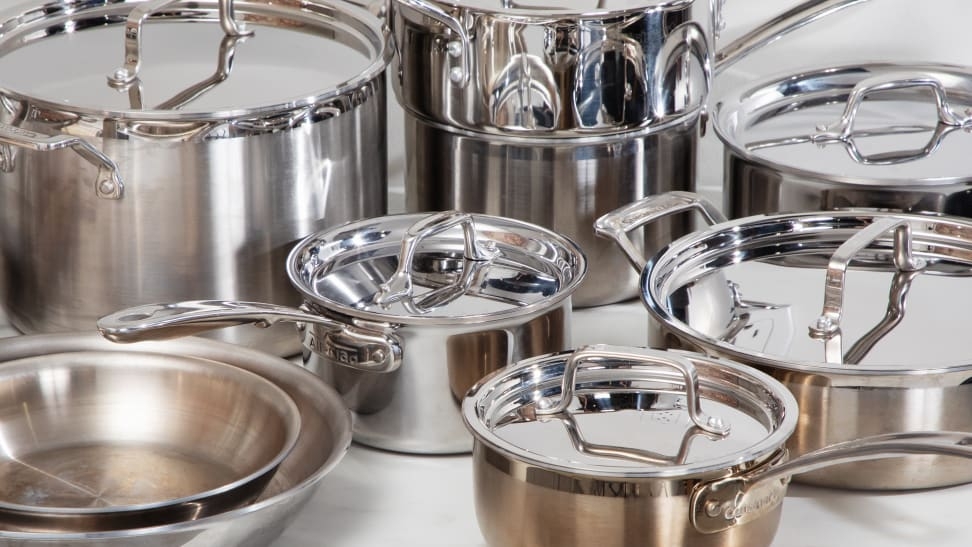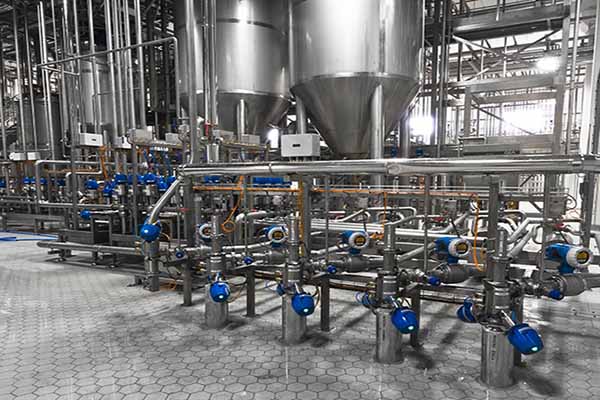Food Grade 304 stainless steel, a linchpin in food processing, holds a reputation for its resistance to corrosion and durability, meeting stringent safety standards in handling food.
The chromium and nickel blend in Grade 304 makes it a favored choice for its resilience against heat, water, and chemicals.
Understanding the intricacies of this alloy is crucial for ensuring product safety and integrity.
The significance of Food Grade 304 stainless steel extends beyond its composition, opening a gateway to a world where reliability and excellence converge to uphold the highest standards in food safety and hygiene.

The numerical values in stainless steel grades like 18/8 and 18/10 signify the chromium and nickel content, respectively, in the alloy composition.
Understanding these numbers is crucial in determining the quality, durability, and corrosion resistance of the stainless steel.
Different grades such as 304, 430, and 220 offer varying properties, making it essential to comprehend the distinctions for specific applications.
Two widely used grades of stainless steel in food preparation and dining are 18/8 and 18/10, also known as Type 304 within the 300 series. The numerical breakdown indicates the chromium and nickel composition, where 18 signifies the percentage of chromium and the second number denotes the nickel content. For instance, 18/8 stainless steel consists of 18% chromium and 8% nickel.
Type 304 stainless steel contains no more than 0.8% carbon and a minimum of 50% iron. Chromium plays a vital role in preventing oxidation (rust) by binding oxygen to the product's surface. Nickel contributes to enhanced corrosion resistance, meaning that higher nickel content results in greater resistance to corrosion for stainless steel
Read more : Can 304 stainless steel rust ?
Understanding these numbers helps in selecting the appropriate stainless steel grade based on factors like corrosion resistance, durability, and rust prevention. This knowledge is vital for ensuring the longevity and performance of stainless steel products in different settings.
Stainless steel tube materials like 304, 430, and 201 are all widely used but have different properties and applications due to variations in their composition. Here’s a breakdown of the differences:
You may also like: Will 201 stainless steel rust?
Key Differences:
Choosing the right grade of stainless steel depends on the specific application requirements, including corrosion resistance, mechanical properties, aesthetics, and budget considerations. For critical applications, particularly where corrosion resistance is paramount, 304 stainless steel is often the preferred choice.
Recommend: What Is the Difference Between 201 and 304 Stainless Steel?
Food grade 304 stainless steel is generally considered safe for food contact due to its corrosion resistance and durability.
Widely present in kitchens, food grade 304 stainless steel is utilized in appliances, cookware, dishware, flatware, and utensils due to its durability, ease of sanitation, and corrosion resistance against acids in meats, milk, fruits, and vegetables. Most importantly, food grade 304 stainless steel is a safe option for food and beverage use, as there are no chemicals that can migrate into your food from these products
When considering flatware, there's a common misconception that 18/10 is heavier than 18/8. In reality, there's no weight difference between 18/8 and 18/10 flatware. The additional nickel in 18/10 makes it slightly sturdier, meaning the fork tines are a bit more resistant to bending, and it also contributes to a shinier surface.

Crafted from durable food grade 304 stainless steel, cookware made from this material offers safety and reliability in kitchen applications. Stainless steel cookware presents numerous benefits such as high resistance to corrosion, durability, and the ability to maintain the flavor of food without altering it.
Its versatility allows for various cooking techniques, including searing, browning, and deglazing. Additionally, stainless steel cookware is compatible with induction cooktops, ovens, and dishwashers, making it a convenient choice for everyday use.
When properly cared for, stainless steel cookware can last a lifetime, offering a valuable addition to any kitchen arsenal. Its non-reactive nature ensures that no harmful chemicals leach into food, making it a safe option for cooking.
Stainless steel sanitary tubes are predominantly manufactured using food-grade 304 stainless steel due to its superior corrosion resistance and hygiene properties.
The application of food-grade 304 stainless steel in stainless steel sanitary pipe tubes ensures that they can safely handle various food products without compromising on safety or quality.
Food-grade 304 stainless steel provides the perfect material for sanitary tubes, offering a non-reactive surface that maintains the purity and integrity of the food products it transports.
Sanitary pipes made from food grade 304 stainless steel combine the hygienic, durable, and corrosion-resistant properties of the material with the specific design requirements of sanitary applications. This combination ensures that the pipes can safely and efficiently transport food products, beverages, and pharmaceuticals while maintaining the highest standards of cleanliness and safety. The interconnection between sanitary pipes and food grade 304 stainless steel lies in their complementary attributes that together support stringent hygiene requirements in critical industries.

Recommend:
Troubleshooting 101: Common Issues and Solutions for Sanitary Stainless Steel Tube Systems
Is 304 Stainless Steel Surgical Grade?
When considering the best food grade stainless steel for applications, the discussion typically revolves around the properties of Food Grade Stainless Steel 316 and Grade 430 Stainless Steel.
While Grade 316 offers excellent resistance to various chemicals and is preferred for salt and acidic compounds, Grade 430 provides a lower-cost alternative with moderate resistance properties.
Understanding the specific requirements of the application, such as exposure to salt or corrosive elements, is crucial in selecting the most suitable food grade stainless steel alloy.
Optimal for food-grade applications requiring high resistance to corrosive elements and exceptional durability, stainless steel grade 316 stands out as the superior choice among food-grade stainless steel alloys.
Recommend: Differences Between 316 and 316L Welded Stainless Steel Pipe
Grade 430 stainless steel is commonly utilized in the food industry due to its notable characteristics and suitability for specific applications. It is a ferritic alloy with a similar chromium content to grade 316 but with a lower nickel content. This makes it magnetic by default and gives it strong resistance to stress corrosion cracking, nitric & organic acids, sulfur, and oxidation.
When considering grade 430 for food-safe applications, factors such as its temperature resistance, maintenance practices, and stainless steel welding techniques play crucial roles. Maintenance practices, including proper cleaning methods and protecting the oxide layer, are essential for prolonging its useful life in food processing environments. Proper welding methods are also important to ensure the corrosion resistance of grade 430 stainless steel.
In selecting the most suitable stainless steel for food-safe applications, it is imperative to consider factors such as resistance to corrosive elements, temperature extremes, and maintenance practices.
You may also like:
Exploring the Different Types of Sanitary Pipes: A Comprehensive Guide
Food grade stainless steel is specifically designed to meet strict sanitary standards for use in food processing and preparation, ensuring no contamination or chemical migration into food.
Regular tube stainless steel may not have the same level of resistance to corrosive elements and may lack the necessary composition for safe food contact.
Differences lie in the specific alloy composition, finishing processes, and resistance to extreme conditions, making it crucial to select the appropriate stainless steel grade for food-related applications.
Food grade stainless steel differs from regular stainless steel primarily in its composition, non-reactivity, hygienic properties, and compliance with stringent standards for food contact materials.
The specific grades used in food grade stainless steel, such as 304, are carefully chosen for their corrosion resistance, durability, and ability to maintain the quality of food products.
Regular stainless steel may not meet the same rigorous criteria as food grade stainless steel, making it less suitable for applications where contact with food is a concern.

Stainless steel used in food applications distinguishes itself from standard stainless steel through specialized composition and properties.
What distinguishes food-grade stainless steel from regular stainless steel in terms of reactivity and suitability for specific applications lies in its surface smoothness, corrosion resistance, high heat tolerance, non-toxic nature, and durability benefits.
Food-grade stainless steel is specifically designed to have a smooth surface finish, high resistance to corrosion, withstand high temperatures, be non-toxic, and offer durability advantages for various food-related applications.
It is easy to clean and maintain, making it suitable for food-related applications where hygiene is crucial.
Differentiating food grade stainless steel from regular stainless steel involves understanding specific compliance requirements in terms of material composition and surface properties.
Food grade 304 stainless steel must meet stringent compliance standards set by industry regulations to ensure its suitability for food contact. These standards encompass material properties, manufacturing processes, and quality assurance measures to guarantee the safety and hygiene of food handling equipment and utensils.
Regular stainless steel differs from food-grade stainless steel in its wider composition range, potentially leading to increased reactivity with certain substances.
This variability in composition can make regular stainless steel less suitable for direct contact with food or beverages.
Understanding these differences is crucial for selecting the appropriate stainless steel type for specific applications.
You may also like:
Unveiling the Versatility and Superiority of 304 Stainless Steel Rectangular Tube
Understanding 316 Stainless Steel Rectangular Tube
Stainless steel, outside the realm of food-grade specifications, encompasses a wide range of compositions and applications in various industries.
Outside the realm of food-grade specifications, stainless steel compositions vary widely, offering diverse levels of corrosion resistance suitable for industrial applications that prioritize durability and temperature resilience.
Regular tube stainless steel may exhibit higher reactivity potential, varying surface characteristics, and differing chemical resistance compared to food-grade stainless steel.
Understanding these differences is crucial for ensuring material safety and assessing corrosion susceptibility in various environments.
In non-food-grade applications, stainless steel tube standards exhibit varying reactivity levels, surface characteristics, and chemical resistances, distinguishing them from food grade 304 stainless steel.
Stainless steel finds applications beyond food processing, extending to areas such as construction, automotive, and industrial settings.
Food-grade stainless steel offers several benefits in food processing applications.
It is non-leachable, ensuring that no harmful chemicals migrate into food.
Additionally, it is environmentally friendly, versatile, durable, robust, and easy and quick to clean, making it a preferred choice for maintaining food safety standards.
Food grade 304 stainless steel is non leachable which makes it safe for cooking and without compromising flavour and taste of dishes.
Considering the inherent non-leachable properties and durability of food grade 304 stainless steel in food processing applications, its environmentally friendly nature stems from sustainable practices such as eco-conscious manufacturing processes and offering green alternatives that contribute to reducing the carbon footprint.
The use of reusable containers made from food grade 304 stainless steel aids in reducing waste and promoting eco-friendly practices. By choosing stainless steel tube products over single-use alternatives, individuals can actively participate in minimizing environmental impact.
Additionally, the durability of food-grade stainless steel promotes longevity, reducing the need for frequent replacements and ultimately supporting a more sustainable lifestyle.
Incorporating stainless steel in biodegradable packaging solutions further enhances its environmentally friendly profile, aligning with the growing demand for eco-conscious materials in various industries.
With its unmatched durability and resistance to corrosion, food-grade stainless steel stands out as a versatile material in various industrial applications.
Incorporating food-grade stainless steel ensures adherence to sanitary standards, while regular maintenance practices help prolong its useful life.
One significant benefit of food-grade stainless steel is its exceptional durability and robustness, making it a reliable choice for various industrial applications requiring longevity and resilience against harsh conditions.
The durability of food grade 304 stainless steel ensures that it can withstand wear and tear over time, providing a long service life. Its strength allows it to maintain structural integrity even under challenging environments, making it suitable for demanding use.
Additionally, the corrosion resistance of food grade 304 stainless steel protects it from rust and degradation, further enhancing its longevity. This combination of durability, strength, and corrosion resistance makes food grade 304 stainless steel a preferred material for applications where reliability and performance are paramount.
The exceptional durability and robustness of food grade 304 stainless steel not only make it a reliable choice for various industrial applications but also contribute significantly to its ease of cleaning and maintenance.
With its corrosion resistance, temperature impact, and easy-to-clean properties, food grade 304 stainless steel stands out as a practical and efficient choice for a wide range of applications.
In summarizing the comprehensive insights into food grade 304 stainless steel presented, it becomes evident that meticulous consideration of alloy composition, finishing techniques, maintenance protocols, and environmental factors is paramount in ensuring the integrity and suitability of such materials for food processing applications.
| Key Aspects | Importance |
|---|---|
| Surface finish | Critical for sanitary standards |
| Corrosion resistance | Essential for durability and longevity |
| Temperature effects | Impact on material properties |
| Welding impact | Crucial for maintaining corrosion resistance |
| Maintenance practices | Key to prolonging stainless steel life |
Understanding the significance of surface finish, corrosion resistance, temperature effects, welding impact, and maintenance practices is vital for utilizing food-grade stainless steel effectively in food processing environments. By prioritizing these factors, industries can ensure the safety, quality, and longevity of stainless steel equipment and components, ultimately contributing to the integrity of food processing operations.
Food grade 304 stainless steel is suitable for both hot and cold food applications due to its exceptional temperature resistance, durability factor, heat conductivity, and food safety properties. Its versatility makes it ideal for various culinary settings.
In terms of corrosion resistance, food grade 304 stainless steel excels due to its high chromium content. Its durability, heat resistance, and versatility make it a top choice. Proper cleaning and maintenance, acidic compatibility, and eco-friendly features enhance its sustainability.
Proper care and regular cleaning are essential for maintaining food grade 304 stainless steel. Rust prevention measures and adherence to maintenance tips ensure longevity assurance. Follow precise maintenance guidelines to sustain the quality of this stainless steel.
In applications involving acidic foods or beverages, the use of food grade 304 stainless steel is suitable due to its high corrosion resistance, heat tolerance, and compatibility with acidic substances. Proper cleaning and maintenance ensure sustainability advantages.
Using food grade 304 stainless steel in food processing applications offers environmental benefits. It is an energy-efficient, sustainable material, making it an eco-friendly choice. Its use reduces waste and environmental footprint, aligning with green practices.
Foshan Vinmay Stainless Steel is a large-scale international enterprise which concentrates on producing stainless steel welded tubes and the related fittings. Our products are strictly produced according to multiple international standards including stainless steel welded tubes for food industry with ASTM A270/ EN10217-7 standard. Welcome to send us enquiry . Contact us today for the free sample
In conclusion, Food Grade 304 stainless steel emerges as a stalwart in the food processing industry, embodying corrosion resistance, durability, and ease of maintenance. Its chromium and nickel composition make it a popular choice for food-grade applications, ensuring product integrity and safety.
Like a well-oiled machine, Grade 304 stainless steel operates seamlessly in food processing settings, setting a high standard for reliability and excellence in material selection.
